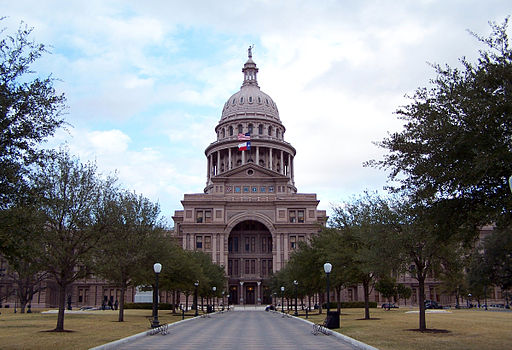Tag: Redistricting
-
Redistricting committees appointed, adjourned, and change in Ohio, New Mexico, and Utah

Here’s a summary of recent redistricting committee updates from Ohio, New Mexico, and Utah. In Ohio, the state legislature announced members of the Joint Committee on Redistricting, which will be holding two hearings on congressional redistricting proposals before the Nov. 30 deadline for map enactment. The committee’s members are Sen. Theresa Gavarone (R), Sen. Rob…
-
Redistricting timeline update: Georgia begins special session, New Hampshire and Ohio redistricting efforts delayed

Here’s a summary of recent redistricting updates from Georgia, New Hampshire, and Ohio. Georgia: The Georgia State Legislature convened for a special session focused on redistricting on Nov. 3, 2021. Senate Majority Leader Mike Dugan (R) said he expected the legislature to agree on and pass state legislative maps quicker than congressional maps. “[State legislative…
-
Iowa, Massachusetts enact new district maps

Iowa enacted new congressional and state legislative maps, and Massachusetts enacted new state legislative maps, on Nov. 4. Nationwide, legislative redistricting has been completed for 444 of 1,972 state Senate seats (22.5%) and 1,243 of 5,411 state House seats (23.0%). In Iowa, Gov. Kim Reynolds (R) signed new congressional and state legislative maps into law…
-
Alabama, North Carolina enact new congressional, legislative district maps

North Carolina and Alabama enacted new congressional and legislative maps as part of the 2020 redistricting cycle. In Alabama, Gov. Kay Ivey (R) signed proposals for both congressional and legislative maps into law on Nov. 4. The state Senate approved the Senate map on Nov. 1 with a 25-7 vote, and the state House approved…
-
Voters in seven states have decided 11 veto referendums targeting redistricting maps since the first in 1915

States have recently approved new congressional and legislative district maps or are in the process of redistricting after the 2020 census. So it seemed like a good time to look back at instances in the past when opponents of specific redistricting maps collected signatures for veto referendum petitions asking voters to repeal the maps. Voters…
-
Colorado Supreme Court approves state’s new congressional map

On Nov. 1, the Colorado Supreme Court unanimously approved the congressional redistricting plan that the state’s Independent Congressional Redistricting Commission approved on Sept. 28. The map will take effect for Colorado’s 2022 congressional elections. The Court’s opinion said, “For the first time, the state’s congressional district map is not the product of politics or litigation;…
-
Roundup of court challenges involving redistricting (Oct. 28)

Here’s a summary of recent court challenges involving redistricting. Illinois A three-judge panel in the U.S. District Court for the Northern District of Illinois ruled on Oct. 19 that Illinois’ legislative maps enacted in June were unconstitutional and violated the Equal Protection Clause of the 14th Amendment. The Illinois legislature initially enacted state legislative maps…
-
Redistricting roundup in Colorado, Arkansas, and Connecticut

Here’s a summary of recent redistricting news from Colorado, Arkansas, and Connecticut: In Arkansas, the secretary of state’s office approved the veto referendums announced by Arkansans for a Unified Natural State, which challenge the state’s congressional map bills, meaning the organization can begin collecting signatures. The signature campaign for the veto referendums, if successful, would place…
-
Redistricting map updates: proposals, advancements, and enactments between Oct. 20 and 27

At least ten states progressed in either proposing, advancing, or enacting new congressional and state legislative district maps as part of the 2020 redistricting cycle between Oct. 20 and Oct. 27, 2021. Proposed Alabama: On Oct. 25, state Rep. Chris England (D) released Alabama’s first congressional and state legislative draft maps via Twitter. The following day, the state’s…
-
Texas enacts new state legislative district maps

Texas enacted new state legislative districts on October 25, 2021, when Gov. Greg Abbott (R) signed proposals approved by the Texas House and Senate into law. These maps will take effect for Texas’ 2022 state legislative elections. The Senate Redistricting Committee released a draft of a Senate legislative map on September 18, 2021. A Senate…

